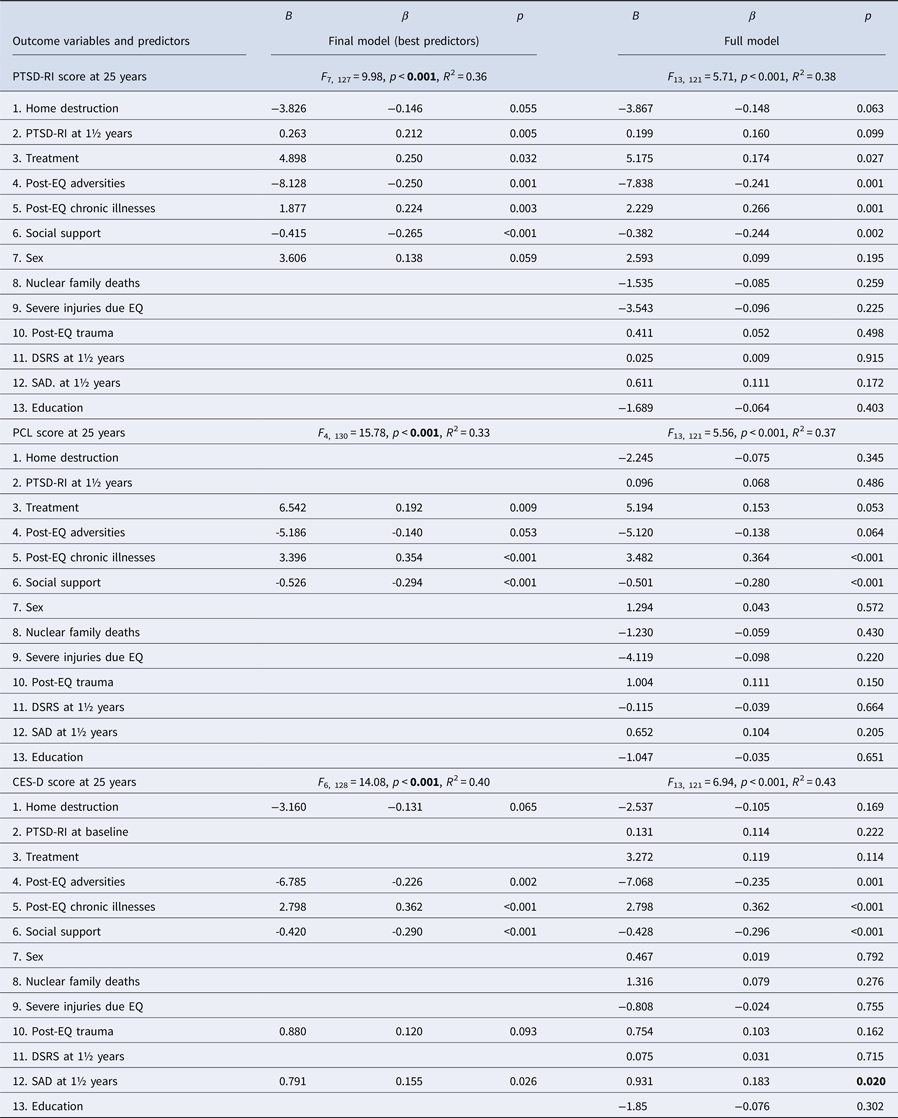The above mentioned article was published in Psychological Medicine with some errors in Table 3. The correct version of Table 3 is shown below:
Table 3. The full model and the final stepwise model for PTSD-RI, PCL, and CES-D scores at 25-year follow-up among adults who were early-adolescents in 1988

PTSD-RI, Posttraumatic Stress Disorder-Reaction Index; PCL, PTSD Checklist; CES-D, Center for Epidemiologic Studies-Depression; EQ, earthquake; SAD, separation anxiety disorder. Reference groups used for the anayses: no home destruction; no treatment; no adversities; no death; and no injury.
Cambridge University Press apologises for this error.



